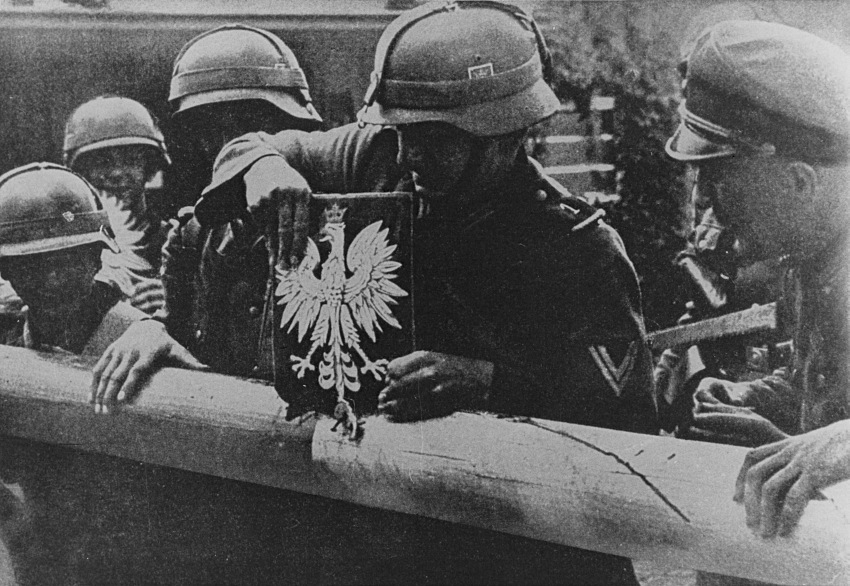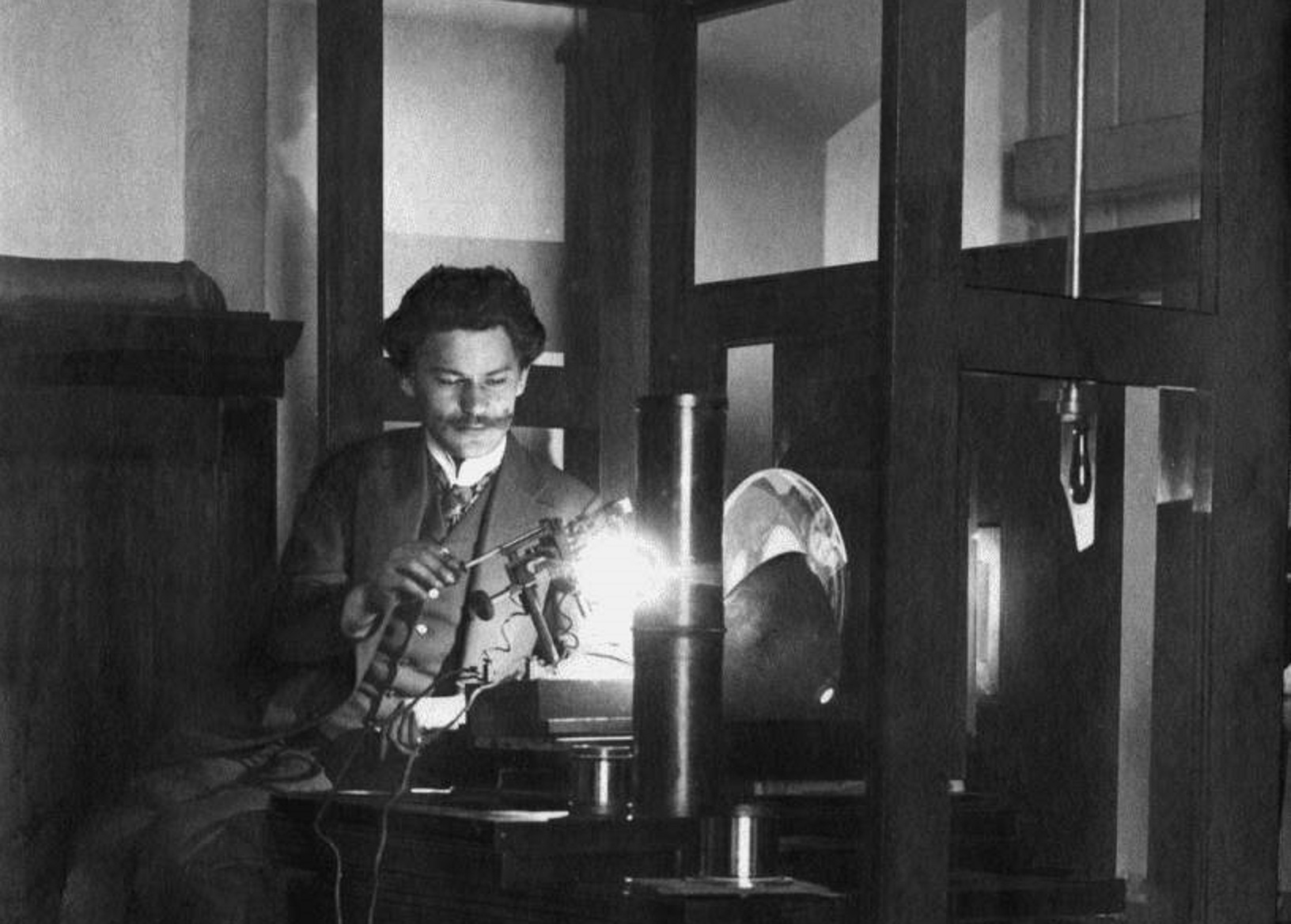An interview with professor Grzegorz Berendt, deputy director of the Museum of the Second World War, a state cultural institution established in 2008 and a museum in Gdańsk, devoted to the Second World War, about present-day perceptions of and research about that war, on the 80th anniversary of its outbreak.

Polishhistory: The Second World War began…
Grzegorz Berendt: On 1 September 1939, when the Third Reich attacked Poland. The Polish Campaign was undoubtedly the first chord of that great world conflict, and the declaration of war on Berlin by London and Paris which took place on 3 September was, in this sense, only the logical consequence of their alliance formalised with the government of the Second Polish Republic.
It is the 80th anniversary of the outbreak of the Second World War and only a few witnesses of this event remain among us. What are ways to maintain the memory of this conflict, how to tell about its uniqueness?
The unprecedented nature of the Second World War is best seen when we look at the scale of crimes committed against civilians, which is why I find it extremely important to preserve as many direct-witness accounts as possible. Historians, museologists and archivists have a special duty to take care of testimonies and relics, many of which are also in private hands. The task for now is to save these from destruction and preserve them in memory treasuries: by editing and digitising these testimonies and other source materials. The main task is to preserve what is most fragile and elusive, and thus priceless. What is more, one never knows, anyone may happen to be interested in the fate of their own family – then the work of historians turns out to be indispensable.

Historians not only preserve documents and establish facts, but also argue about their interpretation. What elements of the history of the Second World War as we tell it do you consider the most important?
Above all, the key issue to me is the completely new, previously unknown character of the war. Both the German Third Reich and the Soviet Union sought not only to defeat their enemies and occupy those territories, but to completely transform the social and economic systems in occupied areas. Earlier conflicts between states usually came down to rivalry for dominance or control over natural and human resources. The aggressors who started the Second World War did far more. Both those countries made the war a tool in a very far-reaching, violent revolution, based in Germany’s case on racial-nationalist criteria, and in the case of the USSR on class criteria. It is difficult for me to recall any conflict from the past in which such assumptions could be implemented so consistently, so brutally and on such an immense scale.
Are there elements of Central European memory, against the backdrop of the nightmare of global war nightmare, that need to be highlighted in particular?
Central Europe and Poland had an experience of real slaughter and madness, which Timothy Snyder suggestively presented in his book Bloodlands: Europe Between Hitler and Stalin through introducing this concept of “bloodlands”. Not only the lands of Central Europe, but also human history in general, had not known similar slaughter. Not only was the scale of the murders of civilians unprecedented, but so also was the scale of broadly understood organised violence. The Bolsheviks, even before the outbreak of the Second World War, and later mainly officers of the Third Reich, used violence en masse. These elements are visible at the macro level. On the other hand, for people from local communities, the memory of micro-scale events held in local or family traditions are also important; they are of no less importance. Fortunately, in the world of free scientific research, all aspects of the history of the Second World War have their researchers. Either we talk about strictly military history or the history of everyday life under conditions of war. Those who are passionate about history should be permitted to spread their wings, certainly without suppression of projects that deal with less obvious topics. Only thanks to such a polyphonic look can we have the chance to get a full picture of what happened between 1939 and 1945.
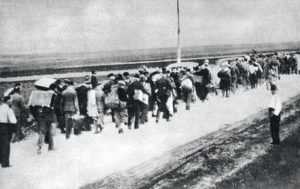
Nearly 80 years of research on the history of the Second World War is a long time. Do historians still have something to argue about?
The well of fascinating research problems seems bottomless. Many research achievements are deeply appreciated, but I can also discuss my concerns. I am worried by how little and how weak is research done on those who led to the war and those who gave it such a terrifying character. Of course, the main perpetration of German crimes has already been investigated at the Nuremberg Trials, but when we look deeper, it turns out that we know amazingly little about those who implemented the criminal directives at the basic level. They were not named by their first and last names; after many years, we are still trying hard to go in this direction. As an example, I can mention research on the activities of Selbstschutz in occupied Poland; Selbstschutz (German for “self-protection”) is the term for different iterations of ethnic-German self-protection units formed after the First World War and in the lead-up to the Second World War.
Do we need to once again verify Hanna Arendt’s thesis about the “banality of evil”?
I think this is more complex, which is why it is so worrying to give up research about initiators and organisers of crimes. My objection is to the attempt to put at the same level the institutional perpetrators of the crime and the perpetrators who acted under duress or who took advantage of the abnormal situation created in the occupation. This is clearly seen in the case of Polish-Jewish relations during the Second World War. We can multiply cases of criminal, condemnable behaviour of Poles against their fellow citizens under the conditions of German occupation. There were thousands of such cases and they cannot be denied. But it is also important how the representatives of a given society behaved. State elites of the Third Reich created the machine of crime, while Polish authorities clearly condemned crimes against Jews.
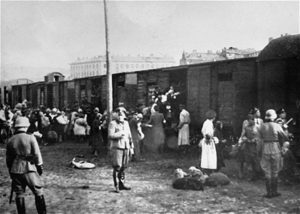
Is this not also about excessive precision, at such an unprecedented scale of crime?
On the contrary – small details and small facts can be of paramount importance. A good example here is the so-called Blue Police or Polish Police (Polnische Polizei) under the General Government, the German zone of occupation established after the joint invasion of Poland by Nazi Germany and the Soviet Union in 1939. Not so long ago, I had the opportunity to read a very interesting text devoted to the activities of this formation and some of its officers. However, it left out a key element: for failure to comply with an order issued by a German superior, an officer could have been shot immediately, which was permitted in the order by the governor-general of Poland, Hans Frank, in December 1939. Without indicating that condition, the history of the Polish Police is left incomplete and can mislead us, omitting the invariably important factor of fear. Another thing is that there is this feeling that those officers represented an “emanation” of Polish statehood. Meanwhile, however, they had nothing to do with the Polish state, although the majority of them were Poles.
In addition to precision, the researcher’s challenge is to maintain a distance to the subject of the study.
Without a doubt. Unfortunately, many Polish historians too frequently forget that not always and not all soldiers of the Polish armed forces were angels, and in civilian life our compatriots often behaved in shameful, wicked ways. Such awareness is not pleasant, but when describing each aspect of the war, one must maintain maximum precision, especially when it comes to things that may provoke opposition and arouse emotions. Particularly disturbing is the temptation to carry out your thesis at all costs, ignoring in its argument information that may question that thesis. On the other hand, while maintaining the courage to write about negative events and behaviours, let us not forget that in the majority, the Polish Army and the Polish resistance fought in accordance with principles of warfare as described in international treaties, and consistently stood on the side of those forces opposing totalitarian evil.
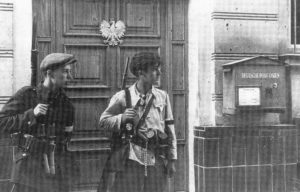
One of the research challenges seems to be particularly important. Although 80 years have passed since the outbreak of the Second World War, we view it as if it happened recently – however, it has been a long time now.
Indeed, we can easily fall into that trap. I will give an example: until at least the end of the Second World War, European societies were confessional communities, in which religion constituted the spirituality of individuals and social customs. Our analysis of that reality cannot ignore that aspect, because today’s societies are secularised and thus significantly different from societies from eight decades ago. Today’s attitude towards religion is one thing – but the need to faithfully depict reality is something completely different. The cross, the star of Zion or the crescent accompanied almost all people during the Second World War and this should be clearly articulated. History cannot be a projection of today’s politics into the past.
That postulate may be justified, but can it really be realised? The “construction” of the past is always based on our current experience, which results from nature rather than from culture.
In a sense, it is understandable, understandably, that we want to idealise those aspects of history that are pleasant, and downplay those that are unpleasant. In my opinion, however, it is the duty of the historian to tell what we know about contemporary reality without anesthesia. When interpreting the history, we cannot ignore those facts that do not suit our thesis. That kind of activity is practicing myth-making, not history.

History stretches between symbols, myths and research reality. One of the strongest examples is Westerplatte, the peninsula in Gdańsk located on the Baltic Sea coast, which from 1926 to 1939 was the location of a Polish Military Transit Depot, and where, according to tradition, the first shots of the Second World War were fired. Maybe it is time to verify that tradition? Today, we know there are other places where shots were fired earlier…
Of the various events that took place on 1 September 1939, Westerplatte has always influenced the mass imagination. Of course, we can assume that the first shots at the then Polish-German border were fired elsewhere. However, this does not undermine the fact that, from the first minutes of the war, Polish soldiers were resolutely defending that Polish transit depot against German assault – in that sense, there certainly is no historical myth there. In my opinion, the key is that Westerplatte became a symbol of Polish resistance since the first hours of fighting. Many memories of September 1939 mention the encouragement that the news brought to all Poles, uplifting their spirits: “Westerplatte still defends itself”. And that is probably the key answer to your question. Westerplatte as a symbol was forged before the entire world between 1 and 7 September 1939, and was so influential that we consider it worth cultivating to this day.
Interviewer: Michał Przeperski
Translation: Alicja Rose & Alan Lockwood

